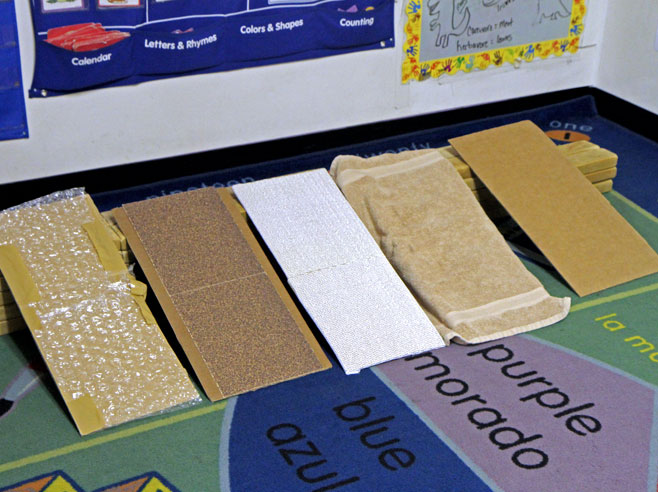Children compare the effect of different textured surfaces as they slide and roll objects down the ramps.
Materials

- Flat panels of cardboard (all the same size)
- Textured materials to place on ramps, such as a towel, doll blanket, bubble wrap, rough sandpaper, felt, smooth or wrinkled aluminum foil, nonslip shelf liners
- Tape and/or clips
- Cardboard blocks or other objects to prop up ramps
- Classroom objects to send down ramps (children’s choice)
- Optional: Drawing materials
Preparation
- Tape or clip a textured fabric or material onto each of the cardboard panels. Leave one or two of the cardboard panels bare. Provide additional fabrics and materials for children to create more textured ramps themselves.
Directions: Lessons 9, 10, 11, 12
Learning Center
- Children explore freely as they build ramps with different textured surfaces. They then send objects down the ramps, noting how the different surface textures affect how far the objects roll or slide. Encourage children to share their discoveries and ideas with each other.
- When you visit this center, invite children to describe the textures of the ramps. Encourage children to predict, observe, and describe how objects move on ramps with different textures. Possible discussion ideas:
- Can you describe the texture of each ramp?
- On which ramps did the (object) travel the farthest? The least far?
- Why do you think the (block) moved farther down the smooth (foil) ramp than the rough (sandpaper) ramp?
- If you wish, make drawing supplies available and encourage children to draw the ramps they have built and the objects they have sent down the ramps. Offer to write words on the drawings, if children would like to dictate a description of what they drew.


